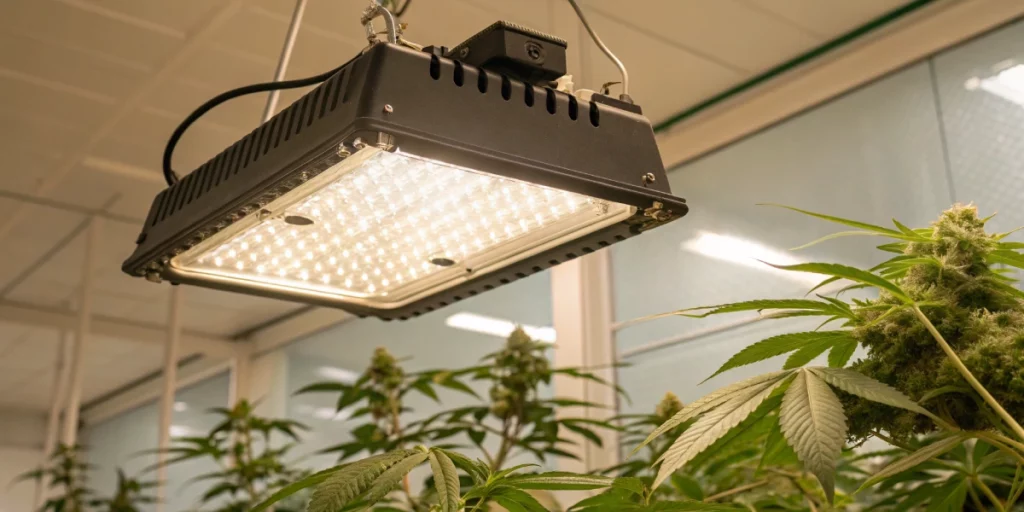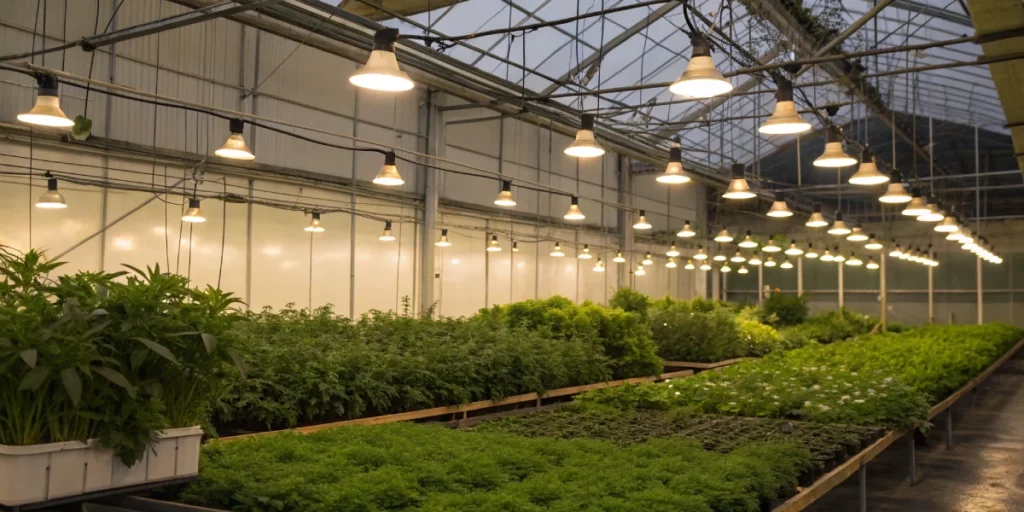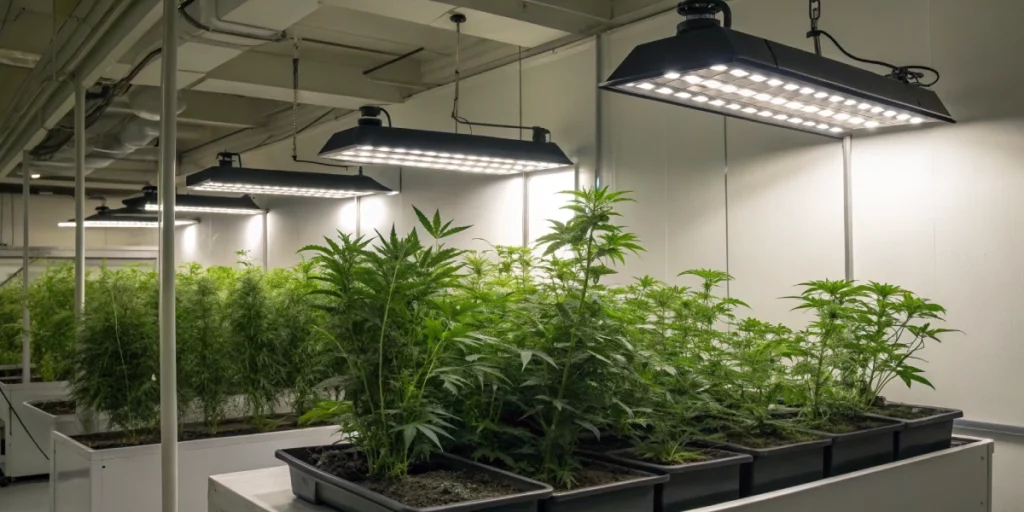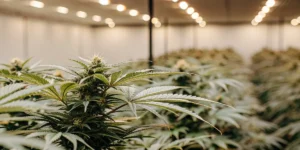High Intensity Discharge (HID) Lights for Growing
What Are HID Lights and How They Work
High intensity discharge lights for growing are a type of lamp that uses gas and metal halide technology to produce bright, intense light for indoor cultivation. These lights work by creating an electric arc between electrodes in a gas-filled tube. The heat and energy cause the gas to emit powerful light that mimics the sun. Their design makes them effective in driving photosynthesis, ensuring your plants receive the energy they need to grow strong and healthy.
In simple terms, high intensity discharge lights for growing provide a concentrated light source that supports vigorous plant development. Their energy efficiency and brightness make them popular among growers who want consistent performance. These lights offer a spectrum that favors both the vegetative and flowering stages of cannabis growth. Their reliability and high output turn the cultivation process into a more productive and enjoyable task for anyone keen on nurturing a thriving indoor garden.
Key Advantages for Indoor Cultivation
One of the main benefits is the impressive light output they offer. They create an environment similar to full sunlight, which is ideal for indoor plants. Their efficiency in converting energy to light means your garden receives intense illumination without excessive energy waste. This reliability allows growers to achieve faster growth and more abundant yields even in limited spaces.
Moreover, high intensity discharge lights for growing help maintain a balanced light spectrum, ensuring that all stages of plant development are supported. Their robust design means they last long and withstand the demands of continuous use. With the proper setup, these lights help reduce stress on plants, leading to healthier growth and stronger yields that make your indoor garden a standout success.

Setting Up HID Lights for Optimal Growth
Installation and Proper Placement Techniques
Installing high intensity discharge lights for growing involves careful planning to ensure that every plant receives even light. Position the lights at a suitable height above your plants to avoid burning or underexposure. Use adjustable hangers or fixtures so you can change the distance as your plants grow. The proper placement ensures a uniform light distribution that supports steady, healthy growth across your entire garden.
When setting up your lights, always check that the wiring and fixtures are secure and rated for indoor use. Safety is key in any indoor setup. With high intensity discharge lights for growing, you need to plan for adequate ventilation and cooling systems as well. This arrangement prevents overheating and ensures that your plants enjoy a stable environment, resulting in a balanced growth cycle and an impressive yield.
Adjusting Light Intensity and Coverage
To maximize the benefits it is important to adjust the light intensity and coverage as needed. Use reflectors and diffusers to direct light evenly over your plants. Regularly assess your garden to check if the light reaches every corner, and reposition your fixtures if necessary. Fine-tuning the light intensity ensures that your plants receive the optimum amount of energy for photosynthesis and robust development.
Adjustments in light coverage also help reduce energy waste and improve the overall efficiency of your indoor garden. With high intensity discharge lights for growing, you can modify the light spectrum and intensity settings to suit various growth stages. This flexibility allows your garden to adapt to the evolving needs of your plants, fostering a healthy environment where each leaf and bud receives the attention it needs to flourish.
Maintenance and Troubleshooting of HID Lights
Regular Cleaning and Bulb Replacement
Maintaining is essential for a successful indoor garden. Regular cleaning of the lamp fixtures and reflectors prevents dust and debris from reducing light output. Always replace bulbs as recommended by the manufacturer to ensure that the light intensity remains consistent. Clean, well-maintained fixtures help your plants get the best light, boosting photosynthesis and overall plant health.
Routine checks and scheduled maintenance extend the lifespan and keep your setup running smoothly. Removing dust and residue from the fixtures can prevent overheating and reduce the risk of electrical issues. A simple maintenance schedule, including cleaning and bulb replacement, helps you avoid sudden interruptions in your garden’s light cycle. This proactive approach makes your indoor growing process more efficient and reliable every day.
Identifying and Solving Common Issues
Even with proper care, issues can arise with high intensity discharge lights for growing. Look out for flickering lights, dimming output, or unusual noises that might signal a problem with the bulb or wiring. Regular inspections help you catch these issues early. If you notice any changes in light quality or output, check the connections and consider replacing aging bulbs. Simple troubleshooting steps can save you time and prevent a drop in plant performance.
When troubleshooting, be sure to follow safe practices and disconnect power before inspecting your fixtures. Many common issues are resolved by cleaning contacts, tightening fixtures, or replacing outdated components. A proactive maintenance routine helps maintain consistent light quality and ensures that your indoor garden thrives with reliable illumination. Addressing these issues swiftly keeps your growing process on track and your harvest abundant.
Maximizing Plant Growth with HID Lighting
Impact on Plant Health and Yield
High intensity discharge lights for growing have a significant impact on plant health and yield. These lights provide a dense, concentrated light source that enhances photosynthesis and stimulates robust growth. With the right settings, your plants can develop faster and produce larger, more resinous buds. The intense light output helps in creating a favorable environment for both the vegetative and flowering stages, leading to improved yields and overall plant vitality.
Using high intensity discharge lights for growing allows you to optimize your indoor garden by providing consistent and powerful illumination. The light spectrum produced by these lamps supports balanced growth, ensuring that every part of your plant benefits from optimal energy exposure. As a result, you can enjoy a healthier garden with strong stems, lush leaves, and bountiful yields that impress both new and seasoned cultivators alike.
Integrating HID Lights with Environmental Controls
Integrating high intensity discharge lights for growing with environmental controls creates a balanced indoor ecosystem. Use thermostats, fans, and humidity regulators to maintain stable conditions that complement the intense light output. This integration ensures that your plants are not only receiving the right amount of light but are also growing in an environment with optimal temperature and airflow. When these systems work together, your indoor garden becomes more efficient and productive.
The synchronization between high intensity discharge lights for growing and environmental controls leads to a smoother cultivation process. By monitoring and adjusting your indoor conditions regularly, you can prevent stress and create a uniform growth environment. This holistic approach not only supports vigorous plant development but also enhances yield quality. With the right setup, your garden becomes a finely tuned system where every element works in harmony to produce a rich and rewarding harvest.

FAQs about High Intensity Discharge Lights for Growing
What are the main benefits of using high intensity discharge lights for growing?
Using high intensity discharge lights for growing improves plant growth by providing intense and even illumination. They boost photosynthesis, leading to healthier plants and higher yields. These lights are energy efficient and adaptable to various growth stages. Their robust output supports both vegetative and flowering phases, making them ideal for indoor gardens that require consistent light distribution for optimal plant development.
How often should I replace bulbs in my high intensity discharge lights for growing?
Bulb replacement frequency depends on usage and manufacturer recommendations, but regular checks every six to twelve months are common. High intensity discharge lights for growing may dim over time, so periodic replacement ensures that your garden receives consistent brightness. Maintaining the bulbs prevents energy loss and keeps your indoor garden thriving. Routine maintenance and timely bulb replacement contribute to a stable growing environment with optimal light output for each stage of plant growth.
Can high intensity discharge lights for growing be used with other environmental control systems?
Yes, integrate well with environmental control systems like thermostats and humidifiers. Combining these systems creates a balanced indoor environment that supports vigorous plant growth. Proper integration ensures that light, temperature, and humidity levels are optimized for your garden’s needs. This synergy enhances plant health and yield, making your indoor garden a controlled and efficient system for cultivating high-quality cannabis and other plants.





